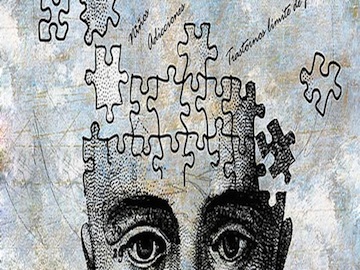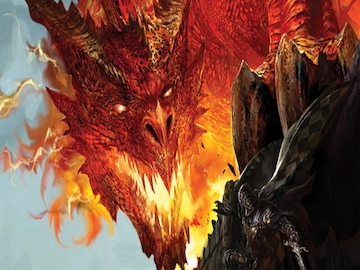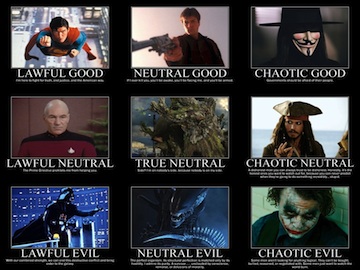“Writing is all about character.”
That’s what they tell you, right?
By they, of course, I mean the majority of professors in MFA programs in Writing the country over–MFA programs, it might be said, that have propagated in recent years like churches of a new religion, departments filled with spectacled prophets at the pulpit, elating the instantly talented, while leaving the unlucky, or underdeveloped, to recoil from the successes of their peers.
Brooding around classroom tables, graduate writing students are set up to test their might. Their mentors, published authors of various degrees of repute, discuss prose and structure, poetics and politics, honesty and art. Character, however, they tell you–especially in fiction–is the key to a good story. And they tell you this essentially because they are correct. There are many things that novelists have to learn in order to actually turn their scribbles into marketable merchandise, and those things don’t necessarily need to be learned by dishing out the equivalent of a down-payment on a home. But if I walked away with anything from my MFA, it is that character is what makes a book readable. For someone, anyone, to pay tens of dollars to read what someone other than them has decided is worthwhile, they should be able to do so knowing that the imaginary people they’ll be spending the next 20 hours of their life with are at least a little complex (unless superficial husks are your shtick).
Before I learned this lesson, I spent my time doing what most people who want to become authors do: I wrote novels and short stories that were copies of other novels or short stories. In these experiments, I might have absorbed some technique, apprehended a writer’s rhythm, imprinting in a sense upon his labored aesthetic like a baby chick upon a mother hen. But despite my best efforts, I could never quite capture what had made that particular piece so…good. Just like you can’t successfully clone a human being (at least not yet) you can’t successfully copy a character without disingenuousness petering through. Another writer can inspire you—in fact, he or she must—and there are post-modern experiments dealing with plagiarism and sampling that are worth noting, but, unless you’re brilliant and dubious, a talented Mr. Ripley, you can’t recreate someone else’s vision of the world. It’s philosophically troublesome.
When I found my first character, my first real (and by real I mean interesting) embodiment of purpose, I remember feeling as if I had discovered my story’s pulse. That’s precisely why I ended up trashing about 600 pages of what I had been working on at the time so that I could breathe life into the mama pajama. Everything about my forthcoming book started the second I met my main character. All that came before was kitschy hotel art, elaborate paintings of apple baskets.
The way I happened upon my character, however, was not altogether typical. I can’t purport to understand how different writers find the men and women who populate their pages, whether they come to them in dreams, or whether they evolve from the people they meet. But I know where my inspiration came from.
Dungeons & Dragons.
Alright, simmer down: I didn’t just pick up Zubius, the chaotic neutral Bugbear Barbarian I developed throughout my basement-dwelling high school years, and let him have run of a fucking book. That would be stupid. Even Zubius would say so. But the technique itself, the rote method I learned when creating my goblinoid antihero at the age of fifteen, had been stored up latently from years of role playing games, whether digital or scratched out over paper and firelight, where choice on behalf of the player was championed, and gimmickry, the imagination’s equivalent to CGI, ceased to matter.
Now, I realize I’m risking no small amount of social capital by putting my history with Dungeons & Dragons into print. I’ve made similar confessions concerning my long time love of video games, a medium many respected cultural arbiters—Roger Ebert comes to mind—says can never be art. New forms of media, new forms of creative exploration, especially when they try to assume dignity or—shock—artistic respect, are bound to be repudiated by establishment critics who maintain genre is divorced from aesthetic permanence. There’s a reason Ursula K. LeGuin hasn’t won a Pulitzer yet, and it’s not because she isn’t amazing. It’s because there’s a war going on right now, especially in the literary world, over the definition of cultural value.
I’m not arguing that D&D, while requiring finesse to play, is society’s greatest form of expression. It is a story-telling game, impermanent as Buddhist sand-art, or coyote tales grumbled around a campfire. But it is from these platforms of interactivity, these sophisticated games we create for an allotment of dopamine, that we teach ourselves ways to deal with the real world. Video games can teach us to cognate, to strengthen the brain cell connections that facilitate memory and activate the parietal cortex. Dungeons and Dragons similarly, while not bequeathing any direct skills involving hand-eye coordination, is also useful when withheld from prejudice. Apart from the math and memorization involved in gameplay, for this writer at least, I came away from my various quests with a platform for creating a mind.
The first Dungeons & Dragons quest I played was inspired from pre-made modules, but ultimately strung together by a bright adolescent who, much like me, was nearly invisible in high school. We played with his twin brother, and a strange, Rutger Hauer-blond giant who scared all of us a little. There was also a boy with a heart condition, and, occasionally, my little brother. It was an undistinguished crew.
Riddled with facial hair about as filled in as what you’d see upon a pair of testicles, I remember the first time the Dungeon Master revealed to me how to create a character. All the dice-rolling for ability traits was easy and fun enough, and I was able to pick up all the subtleties of choosing a race and character class, but when we got to ‘Alignment,’ I found myself stumped. As a fifteen-year-old I was being asked to pick out my character’s moral and ethical fiber as if it were a pair of pants.
In D&D, there are two distinct categories constituting your alignment: morality and ethics. Along the ‘morality’ spectrum, you have good, neutral, and evil. Along the ‘ethics’ spectrum, you have Lawful and Chaotic. A character must be built upon a combination of the two, so that they encompass, whether for good or bad, the complex factors that influence human/humanoid psychology. A lawful good character, for instance, is committed to servicing the public good, de facto, while a chaotic good character, although upholding ideals of goodness will do so according to their own rules and guidelines.
I had a hard time understanding this concept. As a geeky, acne-riddled half-man, all I wanted to was find a way to escape from school and home. But upon insistence by the Dungeon Master, I took a while to research my character’s worldview. I found out that on the exact opposite side of Lawful and Good was Chaotic and Evil. A character created from the latter combination would constitute nothing less than a serial killing narcissist. The giant blond haired boy preferred such a combination, and smiled at the thought of inflicting pain.
True Neutral characters, I discovered, like a swinging pendulum, tended to be subject to whatever sounded most reasonable. If they were interested in profit, and the most reasonable way to get profit was to compromise a good person’s definition of morality, then they would associate with more nefarious characters in order to get the loot. But if a True Neutral character was more concerned with survival (Daryl in The Walking Dead comes to mind), then they would side with the Good and Lawful, if only because order protects best from the harshness of reality. Think of a gun for hire, anyone who doesn’t have set allegiance, but discerns loyalty from of his/her surroundings.
As I began to shift through the possibilities, I was reminded by one of our more erudite players that, just like in fiction, a D&D character sketch that is either all good or all bad can make for a blasé protagonist. Where the alignments get really interesting is when you move further into the grey areas, when good and evil become subject to a range of ethical choices. I was frightened with my fascination, for instance, with the Lawful Evil alignment. Though morally repugnant, Lawful Evil characters understand the importance of law in regards to accomplishing one’s goals. Sinister bureaucrats come to mind, corporate sharks and dictators, crooked cops.
But I found personal solace in the Chaotic Neutral alignment. A Chaotic Neutral character was not so much morally corrupt as absent of allegiance. Lawlessness subjects such characters to opportunism, and all in all allows for them to create unique worldviews, however ridiculous. A creative writing professor once told me that it’s good to have a character you want to read about, but you never, ever wanted to meet. This was Zubius. A character that I wanted to speak without consequence, that could try and fail in attempting to hammer the world to his will. Perhaps this was a reflection upon my life at home, and the desire I had to fit in, to make a noise someone important would hear. But regardless of why, the character-type stuck. Stuck so hard, in fact, that I latently underwent the same damn process when my debut novel’s first worthwhile character was eked from the woodwork. A character, it is of little surprise to me now, more like Zubius than I ever would have imagined.
The day I drew up my first character, I plotted him on a sheet similar to the one used for Dungeons and Dragons. Of course, I didn’t bother with superfluities like gold pieces or twenty-sided dice, but I did think upon the same factors. I wrote down a backstory. I thought of morality. I wondered how, if my character ran into a sticky situation, he would react. I began to put together a list of traits and potential moral quandaries. I even staged a conversation between my character and someone who was challenging his views. I wrote vignettes. I put him into play. My chaotic neutral force of nature. Is what I did really so uncommon? Think upon Darth Vader, for instance, Han Solo and Luke Skywalker. Or the manner in which Truman Capote drew Perry Smith and Richard Hickock. Think about Chaotic Evil Merl in the Walking Dead, or Chaotic Good Rick, or Lawful Evil Shane. Think about Lawful Good Atticus Finch and Neutral Evil Bob Ewell. Think about Chaotic Neutral Victor Frankenstein and Lawful Neutral Ebenezer Scrooge. Every great character in fiction is bound, in some way or another, to a system of ethics and morals that should be only be subject to change under genius circumstances. I once had a mentor tell me that a good novel should end in a way where the expected outcome is still a shock to the system. Similarly, characters should, much like human beings, not act outside of their moral and ethical range. If they do, the reader will stop buying what your selling, and your entire universe will begin to de-piece.
Though I understand I might be coming off as formulaic, I can easily say, as someone still striving to understand what it means to create a good character, none of this is seamless. Those who excel best at creating a compelling creature from the dust of their mind, must proceed with immense amounts of discipline. They must orchestrate situations, environments, and problems, that allow for characters to be tested, and not only tested, but conflicted. They must interact with other characters, and those characters must have their own traits, their own emotions, their own wants and needs and philosophical limitations. The writers I find the most talented are constantly juggling a universe populated with conflicting desires, chemical elements that react with each other. When I stumbled upon my method, I was merely surprised by the fact that a game, the one I played growing up, had figured out a formula that shouldn’t only be regarded by those whose job it is to paint characters out of thin air, but should be taught in every MFA program across the country.






Honestly, another amazing article. Sattin is constantly showing that he is a master craftsman of relating large, all-surrounding issues such as morality and how we all each define ourselves to instances that we can similarly relate to such as high school kids playing D&D, creating characters and back stories just as we might create our own character and back stories. Truly an amazing job of connection to a wide scale audience while relating to his own past and experiences. I continue, and will do so thoroughly, reading these gripping pieces!
While I don’t entirely agree with this breakdown of alignments (Boo Radley, neutral evil? Do you mean Bob Ewell?) and I definitely don’t agree* with the visual aid included in the piece and that is currently circling the Internet, this is a fun article. My own world view has been extremely filtered through my time playing D&D, and I find it does indeed give you an excellent framework for world building as well as character building. As a book editor, I agree. All writers should spend some time playing—and DMing.
One thing I want to point out to you, though, Sam: Alignments are snapshots of a character, of their actions throughout their lives. A paladin who commits a single evil act doesn’t give up his lawful good alignment immediately, while he does forfeit the privileges of his class. It’s not just the gray area alignments that are interesting, but the rigid alignments as well. Drama escalates when you take a rigid character and put him in the ONE situation that breaks him. Lawful neutral Javert. Lawful good Oedipus. Lawful evil Darth Vader. Or maybe the drama meets its conclusion at that point. Hm.
Anyway, as you say, D&D is a great platform. It’s a great starting place. It’s a way to process the world—and then, like with any system, some even greater learning comes from breaking those rules.
Nerds unite! D&D is pretty mainstream these days, too, (Community, The IT Crowd, Freaks & Geeks—how many television shows feature it?) so none of us have to be too worried about being wedgied up against the gym door. Not anymore.
*(I prefer this All-Firefly Character Alignment version, as I find it more representative: the “how-I-mine-for-fish” contribution to http://www.tumblr.com/tagged/alignment-chart?before=1297828649 . Wow, there are so many competing and contradictory versions, showing how people see morality! Fascinating!)
-Christ–very much appreciate your thoughts. You were totally right about the Boo Radley Bob Elwell mix-up. It had to do with a conversation I was having with my wife, and I just inserted the wrong words. Up too late.
I actually completely agree with you when you said: ‘Alignments are snapshots of a character, of their actions throughout their lives.’ Maybe I wasn’t clear enough, but that’s what I was trying to insinuate by the line: ‘Every great character in fiction is bound, in some way or another, to a system of ethics and morals that should be only be subject to change under genius circumstance.’ I think all good fiction is determined by characters who test their boundaries, and they have to push those boundaries through expert narration on behalf of the author. But if they go too far outside their boundaries in a manner executed poorly by a writer, the reader doesn’t buy it. Anyhow, I think we’re more in agreement than not.
Take care, and thanks for your valued insights!
We’re definitely in general agreement. Fun article. Keep ’em up.
Thanks, Chris! Will do.
Yes, another interesting article, Sam! At some point, you should consider teaching your method of character building when it comes to fiction. Such a fascinating peek into your writing process. Can’t wait to read the next article.
D&D is seriously underestimated, IF the author has the skill (and level) to make proper use of it. Though the Storytelling Adventure System, SAS, which made Vampire the Masquerade a bestseller is an even more mature and extended option.